Driving out of London was quite an event, a very slow one. At times I thought we may never reach the M25 but eventually we did, along with the rest of London. It was our intention to drive over the M25 on to the M20 heading southeast to Dover but sadly we did what we understood Google directions told us to do, and took the wrong exit at a roundabout, resulting in a tour around the M25 around to Sevenoaks. Apart from adding to the duration of our journey it wasn’t too bad a detour, however at the time I didn’t appreciate it. We had talked about Sevenoaks before leaving New Zealand as a possible place to live so I was interested to drive through. We liked the greenness, green fields and trees everywhere, a country feel but certainly a good sized town.
Deal is about 15 minutes along the coast to the east from Dover. We arrived around 6pm, not the 4pm I had intended so we quickly dropped off our bags and headed to the Sainsbury’s to buy some groceries. On this note I should say I have been thinking lately about the kg’s I have been putting on and I think sometime in the near future I am going to have to stop buying the extra muffins, donuts, tea cakes and other goodies that have now become part of my regular diet.
Deal is a wonderful beachside town with a population of about 30,000 people on the English Channel. We stayed in Deal just for three nights recovering from a hectic London schedule and enjoyed our apartment which was directly opposite the beach. By the way according to Wiki Deal was the first English soil on which James Cook set foot in 1771 on returning from his voyage to Australia. Here is our apartment on the basement floor.
Out of interest our apartment was a few hundred meters from where, on 22 September 1989, the IRA bombed the Royal Marines School of Music killing 11 bandsmen, and injury 22 other marines.
On Thursday after the kids did school in the morning we went for a wander into town which was only a 10 minute walk away. We also popped into Deal Castle and enjoyed a run around the various tunnels and rooms in the castle itself. It was built by, or should I say built for, King Henry VIII in 1539 and is one of the finest Tudor artillery castles in England. I had no idea what this meant until later when reading up on wiki I discovered the shape of the castle walls are like a Tudor rose, sometimes referred to as the Union rose. There was even, believe it or not, a War of the Roses http://en.wikipedia.org/wiki/Tudor_rose between the House of Lancaster (whose badge was a red rose) and the House of York (whose badge was a white rose). Here is a photo borrowed from the English Heritage website.
Daniel and Amy on a canon at the Deal Castle.
I made myself go for a run along the beach on the Friday and only just made it back without being sick. I thought exercise was supposed to make you feel good – not this time.
After the kids had finished their Maths (yes seriously) we rushed off to Dover for one of my most informative sightseeing days yet. Here are the white cliffs of Dover …
We arrived at Dover Castle which in itself was pretty exciting as you get to drive right into the castle area to park your car.
While the castle and the tower were excellent to see the highlight to me was going on a tour through the secret wartime tunnels to see the underground hospital and later the tour of the Operation Dynamo tunnels where the Dunkirk evacuation was planned. See http://www.english-heritage.org.uk/daysout/properties/dover-castle/wartime-tunnels/operation-dynamo/
Prior to the tour I never realised how amazing this event in history was. The British and Allied soldiers were surrounded by the Germans on three sides and getting pushed back toward the sea which was their only way out. Somehow they needed to be rescued but the task seemed impossible. The rescues began on 26 May and finished 4 June 1940. After an initial slow start with many of the rescues ships getting bombed each day more and more soldiers escaped off the beaches. Every “man” who could lay their hands on a boat small or large helped transport soldiers over the channel from Dunkirk. In total 338,226 soldiers were rescued but unfortunately 2,000 soldiers, sailors and civilians were killed during the rescues. 236 ships sunk and 177 RAF aircraft were shot down. It was a sobering presentation and surreal to be standing in the very tunnels where the operation was planned.
Now on to the castle! This site has a ton of history reaching back possibly to Roman times. The current shape of the site dates to Henry II around the 1200’s. The Great Tower is a lot of fun to run around, according to Daniel and Amy, and many of the rooms have been redecorated to give you a feel for what they would have been like. Take a look at http://www.english-heritage.org.uk/daysout/properties/dover-castle/great-tower/ and the online tour at http://www.english-heritage.org.uk/daysout/properties/dover-castle/great-tower/virtual-tour/
I will save you the history lesson but the website above has a ton of information. Here are a few photos from our visit:
The Great Tower, what could fit in the photo, and the kitchen area in the Great Tower.
We spent most of the day at Dover Castle but in the end it beat us and we gave up trying to see everything. Definitely a must-see sight but we were happy driving home back to our apartment to put our feet up as the king no doubt would have done. The next day we were off again westward to a place called Wealden near Brighton.
(Week 15B: Wednesday 30 May 2012 – Saturday 2 June 2012)

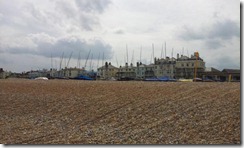
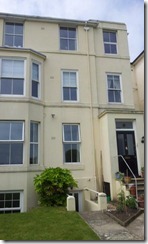
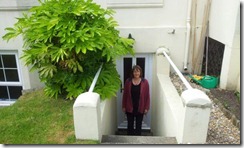
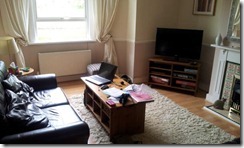

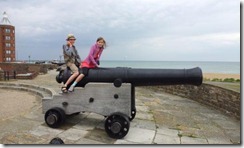

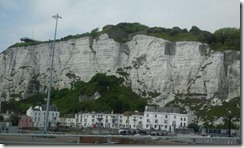
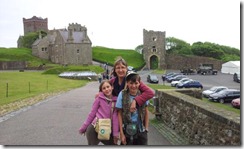
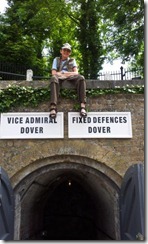
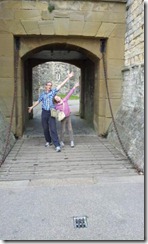
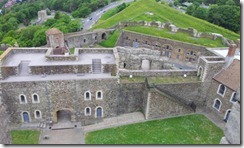
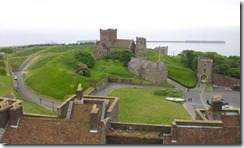
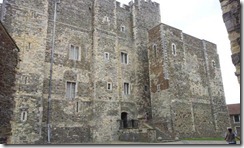
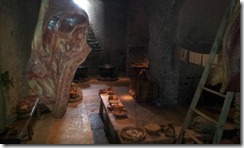
We remember visiting Dover Castle, definitely one of the best.
And sounds like you had a good go at the London museums too.
Pity the weather isn’t a bit warmer for you tho.